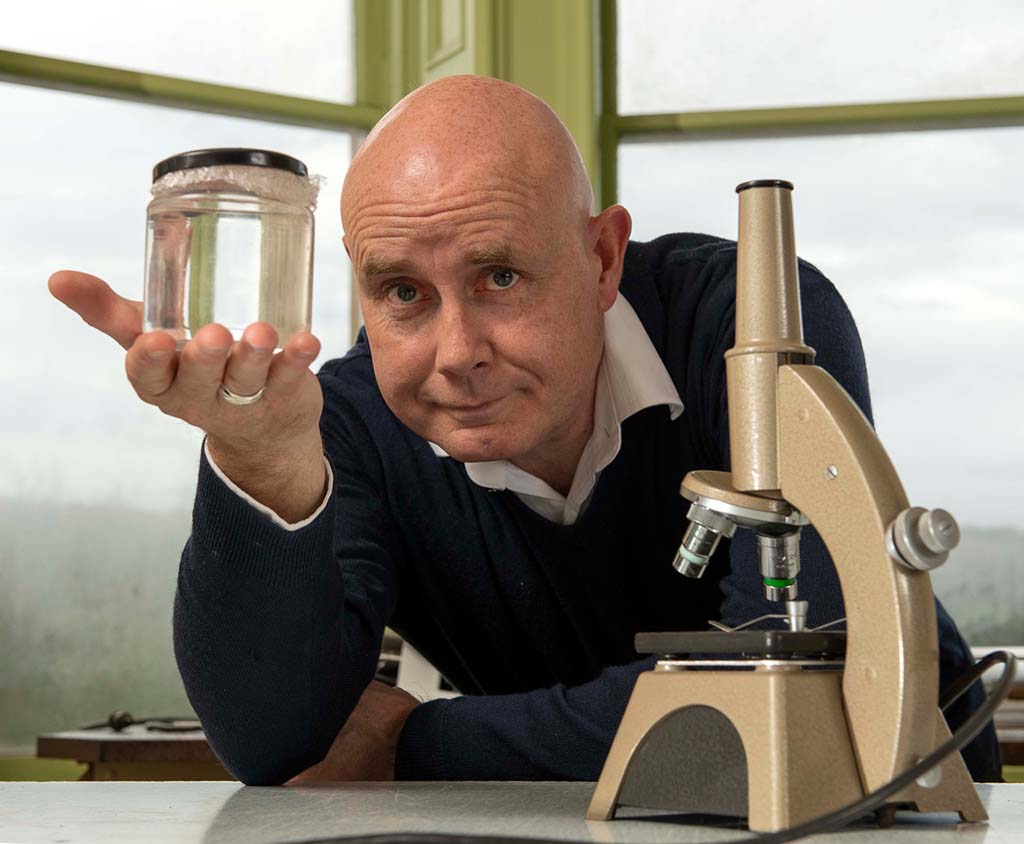
Scientist says there’s no such thing as Nessie
A leading scientist says there is no evidence of the existence of the Loch Ness Monster.
Professor Neil Gemmell, a geneticist from New Zealand’s University of Otago, made the claim today – believing Nessie could just be a giant eel.
Last year, Professor Gemmell and a team of researchers searched for DNA in the loch. The DNA was extracted from 250 water samples taken from the very depths of the loch, resulting in about 500 million sequences that have now been analysed against existing databases, back in New Zealand.
He revealed his findings at a press conference at Drumnadrochit this morning.
Last year, Professor Gemmell said: ‘People love a mystery, we’ve used science to add another chapter to Loch Ness’ mystique.
‘We can’t find any evidence of a creature that’s remotely related to that in our environmental-DNA sequence data. So, sorry, I don’t think the plesiosaur idea holds up based on the data that we have obtained.”
‘So there’s no shark DNA in Loch Ness based on our sampling. There is also no catfish DNA in Loch Ness based on our sampling. We can’t find any evidence of sturgeon either,
‘There is a very significant amount of eel DNA. Eels are very plentiful in Loch Ness, with eel DNA found at pretty much every location sampled – there are a lot of them. So – are they giant eels?
‘Well, our data doesn’t reveal their size, but the sheer quantity of the material says that we can’t discount the possibility that there may be giant eels in Loch Ness. Therefore we can’t discount the possibility that what people see and believe is the Loch Ness Monster might be a giant eel.’
European eels are among the creatures which can be found in the loch, and whose DNA was picked up by the new research.
Juvenile eels, known as elvers, arrive in rivers and lochs after migrating more than 3000 miles from the Sargasso Sea near the Bahamas, where the animals spawn and lay eggs.
A University of Otago spokesman said : ‘Loch Ness is the UK’s largest freshwater body – large enough to hold all the water from every lake, river and reservoir in England and Wales combined.’
Chris Taylor, VisitScotland Regional Leadership Director, said: ‘Loch Ness and the mystery surrounding the elusive monster has fascinated visitors for years. It is a story that transcends Scotland and has become part of popular culture across the world, with appearances on television and in films, from The Simpsons to Missing Link, providing inspiration for millions.
‘This scientific investigation, led by Professor Gemmell, into the inhabitants of one of Scotland’s largest lochs has once again shone a spotlight on the Highlands. Its findings will provide further insight into what lies beneath but questions still remain, and visitors will, no doubt, continue to be drawn to the loch to seek the answers for themselves. With the Year of Coasts and Waters just around the corner it is a reminder of the international appeal of Scotland’s unique and unrivalled waterscapes.

Loch Ness water’s DNA was examined by Professor Neil Gemmell
of the University of Otago (Photo: Trevor Martin)
‘Our lochs, rivers and canals play an important part in the visitor experience, offering enticing walks to stunning waterfalls, boat trips, fishing opportunities and all manner of outdoor adventures including the latest trend for wild swimming.’
Professor Gemmell led the team which includes Adrian Shine from the Loch Ness Project who has conducted previous research on the loch, Professor Eric Verspoor, director of the Rivers and Lochs Institute at Inverness College University of Highlands and Islands (UHI), and molecular ecologist Lucio Marcello from UHI.
Adrian Shine, leader of the Loch Ness Project, said: “Prof Gemmell’s environmental DNA survey of Loch Ness has furnished us, at a stroke, with species lists, to compare with those we have compiled over the last forty years with net and microscope. This powerful yet elegant technique has also brought a new maturity to the popular debate about what much larger creatures might sometimes be seen here.’
At over 22 miles long, Loch Ness encompasses a huge variety of experiences to tempt visitors, including boat trips, award winning visitor attractions, local artisan food and drink producers and accommodation that offers the best of Highland hospitality.
In 2016 a 30-foot long Loch Ness Monster model was found on the loch bed during a state-of-the art sonar search by Kongsberg Maritime and supported by The Loch Ness Project and VisitScotland.
The finding was a prop from the 1970 film, The Private Life of Sherlock Holmes, directed by Billy Wilder and starring Robert Stephens and Christopher Lee and it is believed the model sank after its buoyant humps were removed.
Previous investigations also have uncovered: a crashed Wellington bomber from the Second World War, a 100-year-old Zulu class sailing fishing vessel and parts of John Cobb’s speed record attempt craft Crusader which crashed at over 200mph in 1952.
For more information on the DNA investigation visit: www.lochnesshunters.com
TAGS

